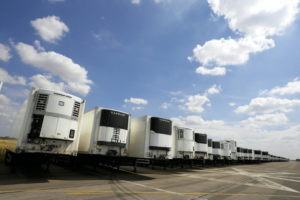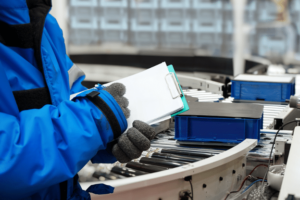Most Common Risks in Cold Chain Management
Approximately the world loses three tons of human food every year, a considerable amount of it getting wasted in supply chains. Distributors of perishables and heat-sensitive products like medicine use cold chains to deliver acceptable quality to consumers. However, cold chains face problems that cause inefficiencies and losses to stakeholders.
Common Risks in Cold Chain Management
Here’s how you can keep a close eye — and temperature — on sensitive, temperature-controlled assets. Let’s start with the riskiest conditions

1. Equipment Failure
One of the worst nightmares for cold chain businesses is equipment breakdown. It can happen for many reasons, the most common one being power interruptions. Cooling systems will undoubtedly fail when there is a blackout. The damage may be severe when a power interruption occurs in a refrigerated truck with only one source of electricity.
Poor air circulation can contribute to the deterioration of temperature-sensitive products in storage rooms. The reason may be blocked vents or hotspots due to a failed thermostat in temperature-controlled areas.

2. Human Errors
Human error can sometimes be the source of a cold chain breach. Insufficient training, improper use of equipment, improper packaging, or even being in too much of a rush are possible causes.
Rough handling can damage containers while incorrect paperwork can cause unnecessary delays at checkpoints. Products can also deteriorate if a worker leaves the refrigerator door open.
Passive cold chains include a coolant in packaging and heavy insulation to keep products cold. However, this cooling method isn’t infallible. Blunders in the packaging process or shipment mishandling can lead to the tearing of packages, exposing goods to environmental temperature.
3. Varying Standards and Infrastructure
Another headache for cold chain management is the difference in standards and technologies in various regions. Issues in global supply chains include the lack of intermediate temperature-controlled storage facilities, uneven cooling standards in midway warehouses, and limited cooling options in some areas.
4. Shipment Theft
Whether it’s pilferage by staff or the hijacking of a whole container of valuable goods, theft can have severe implications in cold chains. It brings losses to business owners and potentially poses a danger to the end-users.
One risk is that the thief may not have the infrastructure required to maintain recommended temperatures for the stolen cargo. If products reach consumers long after leaving the cold chain, they may be ineffective and life-threatening. Edibles can cause food poisoning, while medicines may lose potency.
5. Manufacturing Faults
Cold chain management failures can start right at the production phase. If the manufacturer, for example, uses substandard raw materials to process fresh produce, the end product will be faulty. No amount of refrigeration can correct it.
Some products may necessitate manufacturing in a temperature-controlled environment. Failure to regulate temperatures may result in a defective item.
The Solution: SpotSee Cold Chain Monitoring
SpotSee is a leading manufacturer of innovative cold chain monitoring solutions applicable in a myriad of industries. The company specializes in high-grade temperature recorders and indicators.
Temperature Recorders
A temperature recorder is a device that detects and activates an alarm on exposure to unacceptable temperatures. Some can report in real-time and indicate where the event occurs.
If you are looking for a single use temperature recorder to notify you about incidents of out-of-range temperature, consider the LOGIC Temperature Recorder. The device is programmable, allowing you to set the allowed temperature thresholds for various products. They are also available as multi-use devives when a closed loop supply chain makes returning the recorder for another deployment a practical option.
Temperature Indicators
A temperature indicator is a simple cold chain monitoring device that changes color when exposed to unallowable temperatures.
While most temperature indicators show when an asset gets subjected to too high or below threshold temperatures, Cold Chain Complete indicates both extremities. For more specifically focused applications, WarmMark or ColdMark may be the better choice.
SpotSee has temperature indicators and recorders for any cold chain monitoring need. Explore all the temperature monitoring options for specifications on each device.
Your Ultimate Cold Chain Management Partner
SpotSee increases visibility and accountability in supply chains with reliable data loggers for temperature, impact, and other environmental conditions. You can track your shipment and deploy corrective measures on time whenever unwanted events occur.
Get in touch via the form below to schedule a cold chain management consultation.







